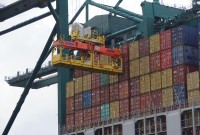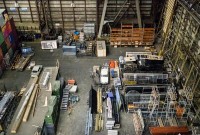- Home
- Business Processes
- Industry Knowledge
- Aerospace Industry
- Automotive Industry
- Banking Domain
- BFSI Industry
- Consumer/ FMCG Industry
- Chemicals Industry
- Engineering & Construction
- Energy Industry
- Education Domain
- Finance Domain
- Hospitality Domain
- Healthcare Industry
- Insurance Domain
- Retail Industry
- Travel and Tourism Domain
- Telecom Industry
- Leadership Skills
- eLearning
- Home
- Business Processes
- Warehouse Management
- Types of Inventory Count Processes
Types of Inventory Count Processes
While dealing with lots of inventory in a warehouse, lots of things can go wrong. Shipments may not have the right number of units in them, or they could get damaged somewhere along the supply chain. Discrepancies in the stock may arise as part of every inventory control, and need to be corrected immediately after the inventory control procedure has been finished.
There are two main options used by companies today, the physical inventory process and cycle counting. There are benefits of inventory cycle counting and physical inventory counts, but one of these methods may be the better option for you. The types of Count processes that may be followed are:
• Physical Count Process
• Cycle Count Process
A) What Is a Physical Inventory Count?
Physical Counts are performed to synchronize the physical and system inventory and are required as a part of the corporate policy or client requirements. During the physical count process, the warehouse is closed and no other activity is performed. This process is the actual count of the materials and products a business owns.
It ensures that the numbers recorded in the company’s books match the actual number of items on the sales floor, stockroom, and warehouses. This in-depth count is usually conducted once a year, with smaller sample counts several times in the year. A physical inventory count may be needed to meet tax regulations or financial accounting rules.
B) What Is a Cycle Counting Process?
The people who count the inventory in one go, may make mistakes along the way, so instead of fixing the inventory
records, you may actually create some new inaccuracies. Therefore, many companies have switched to cycle counting, in which they divide the facility and count each little bit of it at certain times throughout the year. By the end of the year, the company has done at least one physical inventory count in each section of the facility and corrected any errors that were found.
A warehouse cycle counting process is an inventory auditing procedure that is a part of an inventory management solution. In this procedure, a small subset of inventory in a specific location is counted on a specific day. The cycle counting method is a popular solution for inventory management that enables businesses to count multiple items within the warehouse, without needing to count the entire inventory. Cycle Counts can be done for a group of locations, on a daily basis, to ensure that location inventory mismatches are eliminated. This works because a certain number of items infers the count for the entire warehouse. If there happens to be an error found in this sampling technique, errors could also be expected to occur for other items in the warehouse. Cycle counting is beneficial and is a more cost-effective solution because there are less interruptions in operations.
The three types of cycle counting include the following:
Control Group:
This method is used to count items that will provide the best results and will focus on a small number of items that are counted several times in a short period. This repeated count process will reveal any errors in the technique. If there are any errors, they can be corrected. The control group process is repeated until the technique is accurate. Selection of control group could be on the basis of zones, product classes, or item classifications. For example, Velocity code is A, B, or C.
Random Sample:
This type of cycle counting is defined by the counting of items chosen as random. If a warehouse has a large number of similar items, a random amount can be selected to be counted. This count can be done daily so a large percentage of items in the warehouse can be counted in a shorter period of time.
ABC Analysis:
This is an alternative to random sample counting. It used the Pareto principle as the basis, which states that for many events, about 80 percent of the effects come from 20 percent of the causes.
Over, Short, and Damaged
While dealing with lots of inventory in a warehouse, lots of things can go wrong. Shipments may not have the right number of units in them, or they could get damaged somewhere along the supply chain. Discrepancies in the stock may arise as part of every inventory control, and need to be corrected immediately after the inventory control procedure has been finished.
To deal with these issues, warehouse should have an over, short, and damaged (OS&D) process. A well laid down OS&D process helps to fix problems efficiently and maintain accurate records of how discrepancies have been resolved. Correcting the discrepancies should have appropriate controls put in place including approvals. Each corrected item should contain the description of the possible cause of the discrepancy.
Given below are some common types of discrepancies observed during a count process:
Destruction Lack in stock resulted from complete destruction of the product due to the labor/worker's fault.
Delivery Error: Discrepancy due to incorrect acceptance of delivery.
Release Error: Discrepancy was due to incorrect release of goods
Return Error: Discrepancy was due to incorrect acceptance of return
Lost: Unexplained discrepancies were found, goods are unavailable for release until this matter has been resolved.
Found: Unexplained discrepancies were found, stock adjustments marked as “Found” must be explained.
Shrinkage: When inventory disappears for unexplained reasons, that disappearance is called shrinkage. It is important to measure shrinkage and keep it as low as possible.
Related Links
You May Also Like
-
At a high level, the essential elements in a warehouse are an arrival bay, a storage area, a departure bay, a material handling system and an information management system. As part of the process for enabling a warehouse layout, you must define warehouse zone groups, and zones, location types, and locations.
-
Overview of Third-Party Logistics
Third-party logistics (abbreviated as 3PL, or TPL) is an organization's use of third-party businesses to outsource elements of its distribution, warehousing, and fulfillment services. A third-party logistics provider (3PL) is an asset-based or non-asset based company that manages one or more logistics processes or operations (typically, transportation or warehousing) for another company.
-
When products arrive at a facility, there need to be a defined process to let them in. The process for accepting inventory when it arrives is called "Receiving". Any warehousing operation must be able to receive inventory or freight from trucks at loading docks and then stow them away in a storage location. Receiving often involves scheduling appointments for deliveries to occur, along with unloading the goods and performing a quality inspection.
-
Warehouses may seem like a simple, straightforward concept, but they actually include a variety of different types of warehouses that all have their own niche. The type of warehousing that’s right for you depends on your specific industry, location, and needs. From private warehousing, distribution centers, and climate-controlled warehouses, there’s an option to suit every business.
-
Types of Order Picking Methods in the Warehouse
There are many different types of picking in a warehouse and each one works as a customized solution for each business. Depending on the size of your warehouse and inventory, the manpower you have on hand, and the number of customer orders made each day, there may be certain methods that are more efficient for you than others.
-
In the normal course of business, customers are likely to return orders from time to time due to various reasons and business should design processes the manage and accept such returns. A well designed returns management process can reduce costs and issues associated with returns or exchanges.
-
One of the most important decisions when running a warehouse is its layout. Warehouse layout defines the physical arrangement of storage racks, loading and unloading areas, equipment and other facility areas in the warehouse. A good layout aligned with the business needs could have a significant effect on the efficiency.
-
Miscellaneous Warehouse Processes
At the end of each inventory control, the Contractor provides the Ordering Person with an inventory report which contains a list of all stock adjustments. The Ordering Person uses the report to create, by use of his/her own means, necessary value and accounting adjustments related to the stock. Let us look at some to the mislaneous warehouse processes not covered earlier.
-
When a customer wants a product that has been stored in the warehouse, the same need to be picked off the shelf (or off the floor) and get it ready for shipping. Depending on how big is the warehouse, picking can take a while. (Many distribution centers cover more than 1 million square feet.). Hence, warehouse order picking methods are an important aspect within any warehouse.
-
After products have been received and passed a quality inspection, they need to be stored so that you can find them when you need them. This process is called putaway. The spot where you store a particular product is called a location. One section of a warehouse might have small locations for light items; another area may have large locations on the floor for heavy items.
Explore Our Free Training Articles or
Sign Up to Start With Our eLearning Courses

About Us
Learning
© 2023 TechnoFunc, All Rights Reserved










